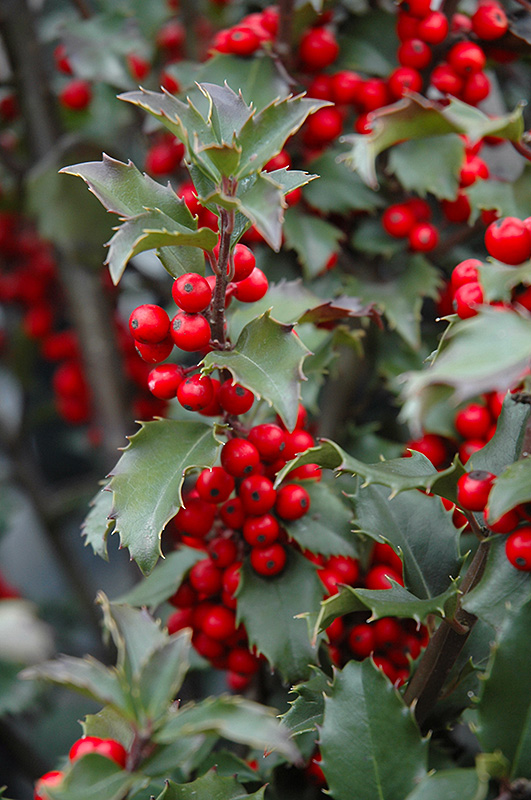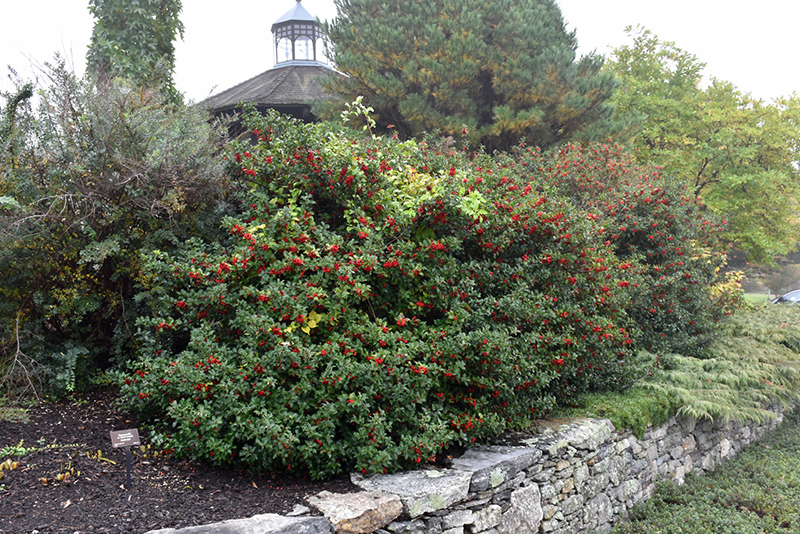Plant Search
Blue Princess Meserve Holly
Ilex x meserveae 'Blue Princess'
Height: 6 feet
Spread: 6 feet
Sunlight:
![]()
Hardiness Zone: 5b
Other Names: Blue Holly
Description:
One of the hardiest of the evergreen hollies, this is a large, spreading shrub with the traditional spiny blue-green foliage and showy red berries in winter; requires a male pollinator, often paired with Blue Prince
Ornamental Features
Blue Princess Meserve Holly is primarily grown for its highly ornamental fruit. It features an abundance of magnificent red berries from mid fall to late winter. It has dark green evergreen foliage. The spiny oval leaves remain dark green throughout the winter.
Landscape Attributes
Blue Princess Meserve Holly is a dense multi-stemmed evergreen shrub with an upright spreading habit of growth. Its average texture blends into the landscape, but can be balanced by one or two finer or coarser trees or shrubs for an effective composition.
This shrub will require occasional maintenance and upkeep, and is best pruned in late winter once the threat of extreme cold has passed. It is a good choice for attracting birds to your yard. It has no significant negative characteristics.
Blue Princess Meserve Holly is recommended for the following landscape applications;
- Accent
- Mass Planting
- Hedges/Screening
- General Garden Use
Planting & Growing
Blue Princess Meserve Holly will grow to be about 6 feet tall at maturity, with a spread of 6 feet. It tends to fill out right to the ground and therefore doesn't necessarily require facer plants in front, and is suitable for planting under power lines. It grows at a slow rate, and under ideal conditions can be expected to live for 40 years or more. This is a female variety of the species which requires a male selection of the same species growing nearby in order to set fruit.
This shrub should be grown in a location with partial shade or which is shaded from the hot afternoon sun. It requires an evenly moist well-drained soil for optimal growth, but will die in standing water. It is very fussy about its soil conditions and must have rich, acidic soils to ensure success, and is subject to chlorosis (yellowing) of the foliage in alkaline soils. It is somewhat tolerant of urban pollution. Consider applying a thick mulch around the root zone in winter to protect it in exposed locations or colder microclimates. This particular variety is an interspecific hybrid.
A NetPS Plant Finder tool



